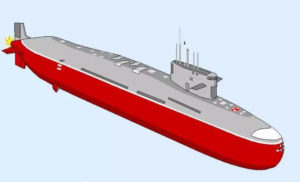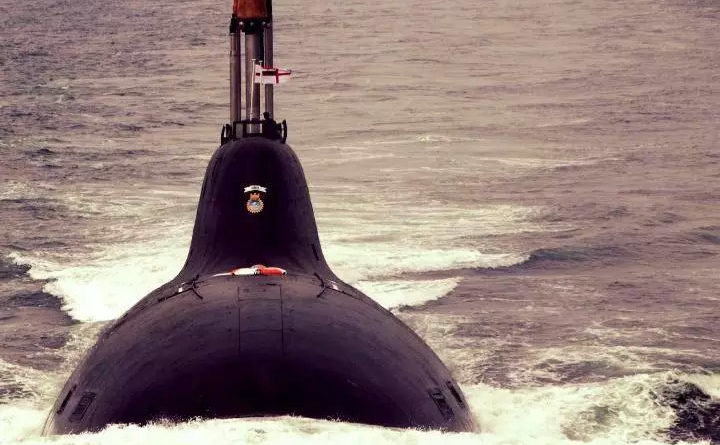India’s Nuclear Submarine Programme Has Reached A New Milestone
29 February, 2020
India’s nuclear submarine programme has made big strides in recent years, and here is all what you need to know about it.
After teething troubles, including a crippling accident, India’s nuclear submarine programme — the country’s costliest defence project, monitored directly by National Security Adviser Ajit Doval — has made big strides in recent years.
In October 2018, the veil of secrecy around the programme was lifted for the first time when India acknowledged that INS Arihant, its first SSBN — a nuclear-powered submarine equipped with nuclear-tipped ballistic missiles — had completed its first deterrence patrol.
Earlier, in 2017, the second boat of the Arihant class, the bigger, improved and better-armed INS Arighat, had been quietly launched by the then Defence Minister Nirmala Sitharaman.
With the Arihant-class project now working at “assembly-line pace”, the programme has got a new vertical — SSNs or nuclear-powered submarines which, unlike the SSBNs, are armed with missiles with conventional warheads.
In 2019, the government granted Rs 100 crore for the initial phase of development of these submarines. Now, with success in the initial design phase, the programme has received clearance from the government for the detailed design phase. This means that the government will now deploy more resources for this project.
India plans to build six SSNs with a displacement capacity of 6,000 tonnes.
Green light for this project was given in 2015, a year after the National Democratic Alliance (NDA) came to power. The initial design work had begun at the Gurgaon-based Submarine Design Centre sometime around 2017 and considerable progress has been made since.
The Hyderabad-based, state-owned Mishra Dhatu Nigam, has been asked to develop an indigenous special alloy for the hull of the submarine to allow it to dive much deeper than the Arihant-class boats. The nuclear reactor being developed for the SSNs will also be more powerful than the one on the Arihant-class submarines.
Like SSBNs, SSNs are powered by a nuclear reactor and can remain underwater for long periods of time, much longer than diesel-electric submarines or SSKs, which have to surface at regular intervals to charge their batteries which power them under water. At the same time, operating SSNs is not as complex as SSBNs as these boats are not armed with nuclear-tipped missiles.
According to news reports, a scale model of the SSNs will soon be fabricated and tested for design flaws. The leasing of an Akula-2 SSN from Russia for a 10-year period in a $3 billion deal earlier this year is also likely to come handy for the development of the new type, and also for training the crew that will operate it.
Although the effort behind the projects is indigenous with 60 per cent of the components for the Arihant-class being sourced from local manufacturers, the Indian Navy has benefited from a close design-and-technical cooperation with Russia.
Work on SSNs will continue as the navy inducts the SSBNs. The Arighat, which is said to be in advanced stage of trials, is likely to enter service with the navy sometime in 2020. The next two SSBNs, identified as S4 and S4* for now, are also under construction at the Ship Building Centre in Visakhapatnam, and are likely to enter service with the Indian Navy some time before 2024.

A conceptual drawing of INS Arihant. (Gagan/Wikipedia)
“Major structural work on the fourth of the class (Arihant-class) is nearing completion, this report by Manu Pubby in the Economic Times say.
These two boats will displace at least 1,000 tonnes more than the 6,000 tonne INS Arihant. The boats will be capable of carrying eight 3,500 km range K-4 Submarine Launched Ballistic Missile (SLBM) while INS Arihant can carry only four of these. The first Arihant-class boat is currently equipped with a dozen 750 km range K-15 Sagarika SLBM. While the K-15 has entered service, K-4 is still being tested.
India is also working on a new series of SSBNs, which will be a marked improvement over the Arihant-class. The designing work for this new series, as Sandeep Unnithan reported in India Today back in 2017, is also currently underway.
Identified as S-5, this new type of submarine will have a displacement of 13,500 tonnes, which is twice that of the Arihant-class boats, and will be capable of carrying 12 long-range nuclear-tipped missiles.
Therefore, India is currently working on three nuclear submarine projects — Arihant-class SSBNs, SSNs, and the 13,500 tonne S-5 class SSBNs.
However, the country remains far from having a credible sea deterrent.
The range of the K-15 SLBM, which equips INS Arihant currently, is just 750 km. When patrolling in the Bay of Bengal, INS Arihant can’t strike population and industrial centres in China and Pakistan, which are over 2,000 kilometres from the northern-most and the western-most edges of the water body respectively.
The next missile in the series, K-4, will provide a solution. With the 3,500-km range K-4, India will be able to target parts of China, including Beijing, and all of Pakistan, from the northern parts of the Bay of Bengal. The missile has been test-fired multiple times, most recently in January this year.
The K-4 will be followed by the 5,000 km range K-5 SLBM. Work on the fourth missile in this series, K-6, began at DRDO’s Hyderabad-based Advanced Naval Systems in February 2017.
The K-6 missile is reported to have a range of over 6,000 km. The K-6, reports suggest, will equip the improved S-5 class SSBNs that India is working on. Induction of these missiles will allow India’s SSBN fleet to hit targets deep inside China.
However, India remains far from matching China’s capabilities, both in terms of numbers and experience. INS Arihant’s deterrence patrol lasted for only around 20 days. In comparison, modern diesel-electric submarines can remain at sea for 30 to 40 days at a stretch. Beijing currently has four SSBNs and India is likely to reach the same number — by the most optimistic accounts — only by the end of the next decade.
Courtesy: Opera News/ swarajyamag.com

